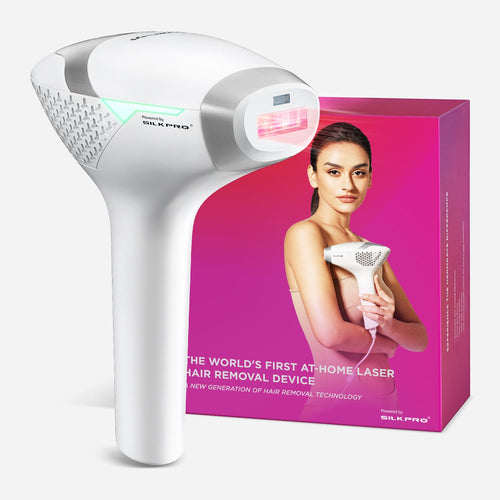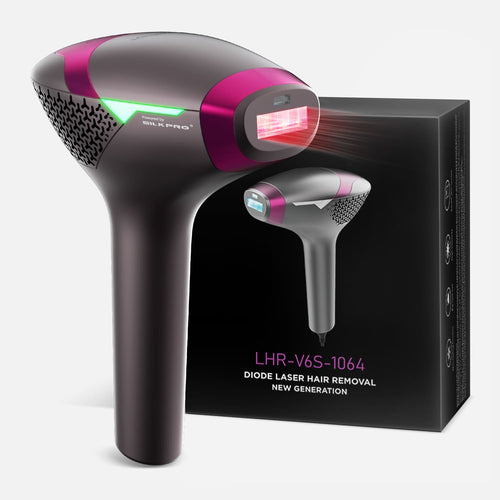Understanding Keratosis Pilaris
An accumulation of keratin, a protein that shields the skin from external agents and infections, is the cause of keratosis pilaris.
In individuals with KP, excess keratin builds up around hair follicles, leading to the formation of small, raised bumps. These bumps are most commonly discovered in the buttocks, thighs, upper arms, and occasionally on the face. Dry skin is frequently linked to KP, and its appearance may worsen during colder months when the skin tends to be drier.
While keratosis pilaris is generally safe and presents no health risks, it may be acosmetic concern for many individuals. The condition is more prevalent in people with a family history of KP, those with certain skin conditions like eczema, and individuals with dry or sensitive skin. The goals of keratosis pilaris treatments are to lessen bump appearance and enhance skin texture.
Laser Hair Removal: How Does It Work?
The cosmetic procedure of laser hair removal targets and destroys hair follicles using focused laser beams. The procedure is designed to provide long-term reduction or removal of unwanted hair. Selective photothermolysis is the basic idea behind laser hair removal, which involves targeting specific structures without damaging the surrounding skin.
A portable gadget uses a laser beam that is absorbed by the pigment during the process.
In the hair follicles, light energy is absorbed by melanin and converted to heat, causing damage. Hair follicles inhibit their ability to produce new hair. Since the laser targets melanin, individuals with darker hair and lighter skin tend to experience better results, as the contrast makes it easier for the laser to distinguish between the hair and the surrounding skin.
Can Laser Hair Removal Clear Keratosis Pilaris?
While laser hair removal is primarily designed for hair reduction, there is anecdotal evidence suggesting that it may have positive effects on keratosis pilaris. Some individuals have reported smoother skin and a reduction in the appearance of KP bumps after undergoing laser hair removal treatments.
The potential benefits of laser hair removal for keratosis pilaris may be attributed to several factors:
1. Removal of Hair Follicles:
Laser hair removal damages hair follicles, reducing keratin buildup. This may contribute to a smoother skin texture and a decrease in the visibility of KP bumps.
2. Stimulation of Collagen Production:
Laser treatments, including laser hair removal, can stimulate collagen production in the skin. Collagen is a crucial protein that imparts elasticity and structure to the skin. An increase in collagen production may contribute to overall skin improvement, potentially benefiting individuals with keratosis pilaris.
3. Exfoliation:
Laser hair removal may have a mild effect. The exfoliating effect of a product can help eliminate dead skin cells from the epidermis and reduce the accumulation of keratin. This exfoliation may contribute to a smoother skin surface.
Considerations and Potential Risks
While laser hair removal may show promise in improving the symptoms of keratosis pilaris, It is important to be aware of certain considerations and potential risks.
1. Varied Results:
How well laser hair removal works for keratosis pilaris may vary from person to person. Elements include hair color and skin type, and An individual's response to it can influence the outcome of a treatment.
2. Multiple Sessions Required:
In order to maximize the benefits of laser hair removal, several sessions are usually necessary. Individuals seeking improvement in keratosis pilaris symptoms should be prepared for a series of treatments over several weeks or months.
3. Skin Sensitivity:
After laser hair removal, individuals with sensitive skin may experience temporary redness, swelling, or discomfort. It is essential to discuss skin sensitivity with the treating practitioner and follow post-treatment care instructions.
4. Cost Considerations:
A cosmetic technique called laser hair removal comes with associated costs. Individuals considering this treatment for keratosis pilaris should be aware of the financial commitment involved.
5. Consultation with a Dermatologist:
Prior to having keratosis pilaris treated with laser hair removal, it's imperative to speak with a dermatologist or qualified skincare professional. They can assess the individual's skin condition, provide personalized recommendations, and determine whether laser hair removal is a suitable option.
Complementary Treatments for Keratosis Pilaris
While laser hair removal shows promise in addressing the symptoms of keratosis pilaris, it's important to consider other complementary treatments that can contribute to a comprehensive approach to managing the condition. These may include:
Topical Exfoliants:
Regular use of topical exfoliants that contain alpha hydroxy acids (AHAs) or beta hydroxy acids (BHAs) may lessen the visibility of KP bumps. In these formulations, glycolic acid and salicylic acid are frequently utilized.
Moisturizers:
Keeping the skin well-hydrated is crucial for individuals with keratosis pilaris. Moisturizers with ingredients like urea, lactic acid, or ceramides can help soften the skin and minimize the rough texture associated with KP.
Retinoids:
Topical retinoids, such as tretinoin, can promote skin cell turnover and may be beneficial in managing keratosis pilaris. These prescription medications should be used under the guidance of a dermatologist.
Phototherapy:
Light-based therapies, including intense pulsed light (IPL) and broadband light (BBL), have shown promise in improving the appearance of keratosis pilaris lesions. These treatments work by targeting blood vessels and reducing redness associated with the condition.
Dietary Considerations:
While the link between diet and keratosis pilaris is not well-established, some individuals report improvements in their skin condition by incorporating a balanced diet rich in vitamins and minerals. Omega-3 fatty acids are present in flaxseed and fish. It may have anti-inflammatory effects that benefit the skin.
Future Directions in Research
The current body of research on the relationship between laser hair removal and keratosis pilaris is restricted, and more thorough research is required to determine the efficacy of this treatment approach. Future research could focus on:
Randomized Controlled Trials:
Large-scale, randomized, controlled trials comparing laser hair removal to a control group or other standard treatments for keratosis pilaris would provide more robust evidence of the effectiveness of this approach.
Long-Term Follow-Up:
Research with extended follow-up periods could assess the durability of the effects of laser hair removal on keratosis pilaris. Long-term studies help determine whether the improvements are sustained over time.
Diversity in Study Populations:
Including a diverse range of participants in research studies would contribute to a better understanding of how different skin types and ethnicities respond to laser hair removal for keratosis pilaris.
Combination Therapies:
Investigating the potential synergies between laser hair removal and other treatments for keratosis pilaris, such as topical agents or light-based therapies, could provide insights into optimized combination approaches.
Conclusion
There needs to be more scientific research available that specifically addresses the issue. Use of laser hair removal for keratosis pilaris, anecdotal evidence, and preliminary studies suggest a potential benefit. The removal of hair follicles, stimulation of collagen production, and mild exfoliation associated with laser hair removal may contribute to an improvement in the appearance of KP.
Individuals considering laser hair removal for keratosis pilaris should approach the decision with realistic expectations, understanding that results may vary among individuals. Consulting a skincare professional or dermatologist is vital for healthy skin. It is crucial to assess the suitability of the treatment, discuss potential risks, and establish a personalized treatment plan.










Dejar un comentario
Todos los comentarios se revisan antes de su publicación.
Este sitio está protegido por hCaptcha y se aplican la Política de privacidad de hCaptcha y los Términos del servicio.